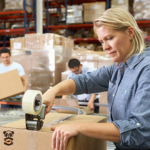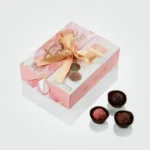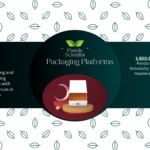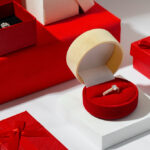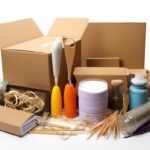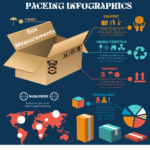RSC vs. Die-Cut Boxes : Choosing the Right Box Style for Your Needs
Choosing a box style for your product is very important not only due to appearance but also due to shipping protection. There are popularly two types-known as RSC boxes and die cut boxes-which have their own sets of advantages and disadvantages. So the big question is — which one aligns better with your business requirements?
1. What is an RSC Box?
An RSC stands for Regular Slotted Container in corrugated packaging. A box type that consists of just one piece of corrugated paperboard and has flaps of equal length on the top and bottom that join in the middle when the box is closed. This design permits the simple application of tape to seal the box, enabling the packing of heavy or bulky products in a variety of shapes and sizes.These reasons combine to make RSC boxes a preferred shipping choice.Also, RSC boxes are typically made from 100% recyclable materials.
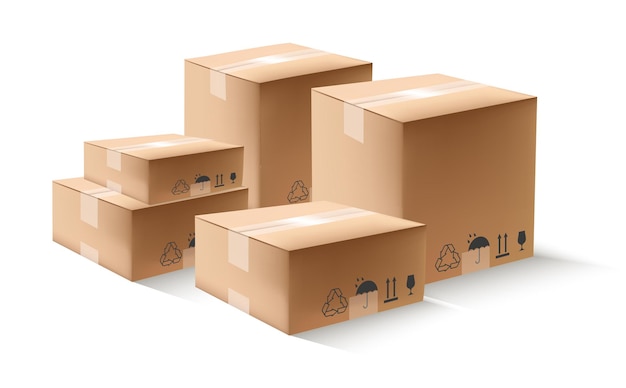
1.1 Applications of RSC Boxes
RSC boxes are ideal for secondary packaging and shipping a variety of products. Some common applications include:
| Product Category | Examples |
| Consumer Goods | Food items, household products |
| Appliances | Kitchen appliances, home devices |
| Toys | Action figures, board games |
| Office Supplies | Stationery, printers, paper products |
| Electronics | Smartphones, laptops, accessories |
| Beverages | Canned drinks, bottled beverages |
| Automotive and Industrial Products | Auto parts, machinery components |
| Fragile Products | Glassware, electronics (with void fillers for extra protection) |
1.2 Key Benefits of RSC Boxes
RSC boxes have many advantages for packaging. They are sturdy, protect products well, and very versatile. They’re ideal for shipping worldwide and can be customized to showcase your brand with simple printed designs and colors.
- Cost-effective: RSC boxes are affordable and waste little material
- Easy to Put Together: RSC boxes are simple to fold up and seal with tape
- Strong & Durable: Made from corrugated materials that offer maximum protection with no areas of entry
- Versatility: RSC boxes meet diverse packaging needs in different industries. Their design and materials suit various products.
- Quick Turn-around: Custom RSC boxes offer quick quotes, low minimum order quantity, and standard sizes for all needs
- Sustainable: Made from 100% recyclable materials, and as such, friendly to the environment.
2. What Is a Die Cut Box?
Die cut boxes are special packaging made to fit specific shapes and sizes for your product. They are cut using a die-cutting machine, giving you more design freedom and structural integrity than regular boxes.
A practical application would be self-locking tabs that negate the necessity for tape, or any windows that serve for branding and exhibiting your product. Custom-made die-cut boxes will provide you with the ability to create packages tailored to your precise needs be it for shipment, display on the shelf, or both.
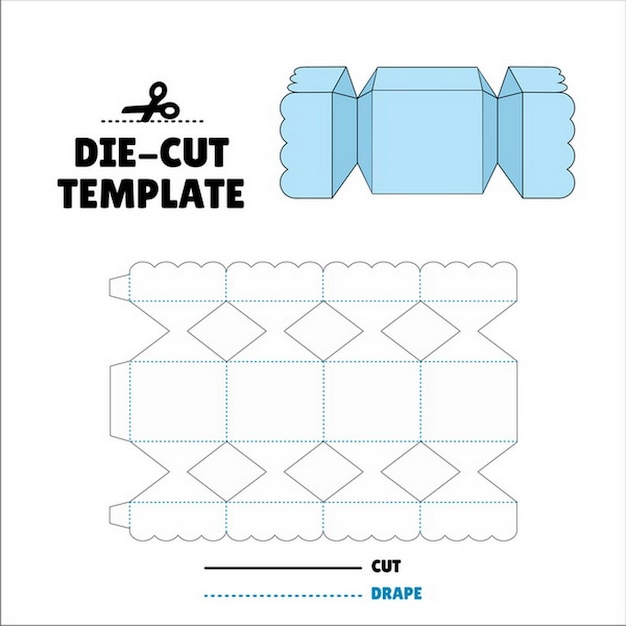
2.1 Example Usage of Die Cut Boxes
Die cut boxes are highly customizable and are made to fit your product snugly. This makes them ideal for high-end products or brands that need a distinct identity. They can serve as both primary and secondary packaging. Here are some examples:
- Luxury cosmetics and skincare products
- High-end electronics and gadgets
- Gourmet food items and specialty beverages
- Delicate or fragile products that need extra care during shipping
2.2 Key Benefits of Die Cut Boxes
Die cut boxes have many advantages over regular boxes:
- Cost-Effective for Shipping: Die cut boxes are designed to minimize material use, reducing package size and lowering costs. This custom fit approach yields compact, economical shipping solutions for products of all shapes
- Maximum Protection: Die cut boxes with box inserts snugly secure products, providing better protection and a great appearance. They offer excellent protection, making them ideal for luxury items.
- Customization & Branding: Die cut boxes are custom made for the best presentation of your brand, making for an unforgettable unboxing experience.
- Less Waste: Die cut boxes often need less tape and packing materials than regular boxes
- Require No Tape for Assembly: The base of the carton simply folds out and locks into place, making assembly minimal
3. Choosing Between Custom Die Cut Boxes and RSC Boxes
Deciding between RSC and die cut boxes depends on what your business needs. You need to think about your budget, the type of product, its weight, how much protection it needs, how easy it is to put the box together, shipping, storage, and what your customers expect. We’ve summarized the key points below to help you make a decision.
Choose RSC Boxes for Cost-Effectiveness and Versatility
RSC boxes are suitable for a wide range of products. They are more affordable due to lower costs for tools, print plates, and production. Customization options include various sizes and flutes, and printing on the inside/outside of the box.
Choose Die Cut Boxes for Customization and Enhanced Protection
Die cut boxes provide a high level of customization, allowing for a perfect fit around products. This minimizes excess materials such as tapes; it enhances the unboxing experience for the customer. The initial cost for the die cut box may be higher because of the custom dies, but the long-term gain from reusability and efficiency makes it worthwhile. The die cut box is perfectly suitable for packaging premium products as it offers scope for attractive presentation because of the ability to shape them into beautifully designed boxes.
3.3 Additional Considerations
- Add additional void fillers to safely pack fragile items. Use bubble wrap, air pillows, packing peanuts, or packing paper with RSC boxes, and when dealing with die cut boxes, use a custom foam or corrugated insert .
- You may also want to consider looking into other box styles that may meet your requirements better. See our corrugated master guide for details.
Conclusion
The right decision on box style affects the safety of your goods while in transit and the overall visual presence of your brand. RSC boxes are cheap, adaptable, and commonly asked for packaging requirements, providing strong protection and easy assembly. In contrast, die-cut boxes help with great customization and are great for use in a premium or added protection and unique design for a product.
Ultimately, the choice between RSC and die-cut boxes boils down to several factors, namely the budget, the product requirements, and the criteria for branding. For businesses looking for premium quality and personalized packaging solutions, Panda Scientist will be a good choice since it offers box designs tailored to your specific needs and simultaneously guarantees durability and presentation. Whether you need simple packaging or something highly customized, Panda Scientist can assure you that you will have the best fit for your products.


